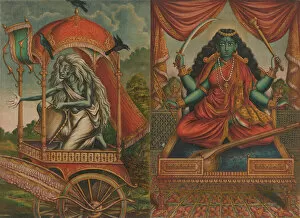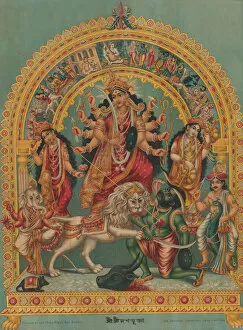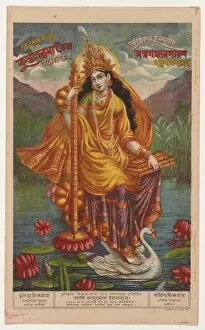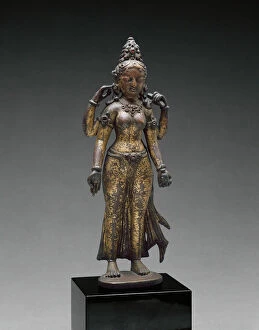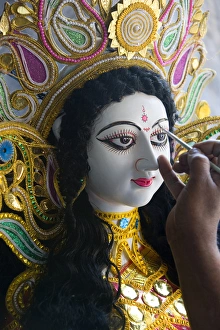Sarasvati Collection
"Sarasvati: A Journey Through Time and Artistry" Step into the world of Sarasvati, the revered Hindu goddess of knowledge, music, arts, and wisdom
All Professionally Made to Order for Quick Shipping
"Sarasvati: A Journey Through Time and Artistry" Step into the world of Sarasvati, the revered Hindu goddess of knowledge, music, arts, and wisdom. This captivating deity has been depicted in various forms throughout history, leaving behind a trail of mesmerizing artworks. One such artwork is "Dhumavati / Matangi, " created between 1885-90 by an unknown artist. The intricate details and vibrant colors bring these divine figures to life, showcasing their power and grace. Another masterpiece from the late 19th century is "Shri Shri Durga. " Its creator remains anonymous but their skillful brushstrokes capture the fierce yet compassionate nature of this goddess. It serves as a reminder of her strength in protecting her devotees. Moving back even further in time, we encounter a stone sculpture simply titled "Sarasvati. " Crafted with precision and finesse, this piece exudes elegance while embodying the essence of knowledge that Sarasvati represents. The Pala period introduces us to two awe-inspiring depictions - "God Vishnu with Goddesses Lakshmi and Sarasvati" from the 10th/12th century and its counterpart from the 9th/10th century. These sculptures showcase divine harmony as Vishnu stands alongside his consorts Lakshmi (goddess of wealth) and Sarasvati (goddess of wisdom), symbolizing balance in all aspects of life. A stunning portrayal dating back to the 10th century portrays Sarasvati holding a book and water pot. This image emphasizes her role as not only a bestower of knowledge but also one who purifies minds through education. In contrast to these serene representations comes a wrathful form known as Magzor Gyalmo or Palden Llamo. Created in the 20th century, this depiction reveals another side to Saraswati's power, reminding us that wisdom can also be fierce and protective.

